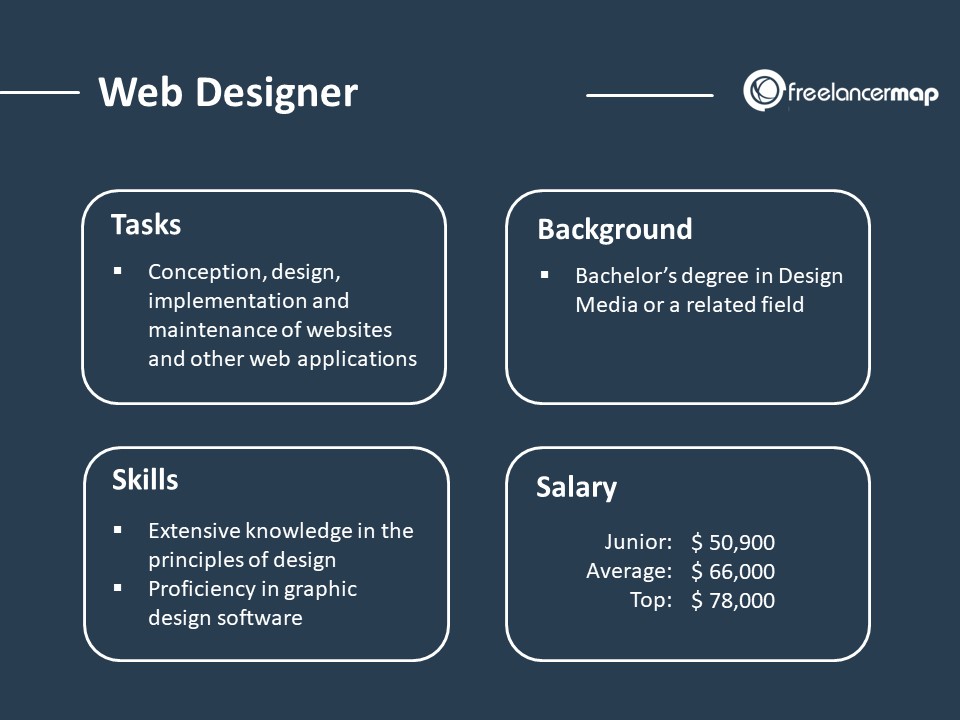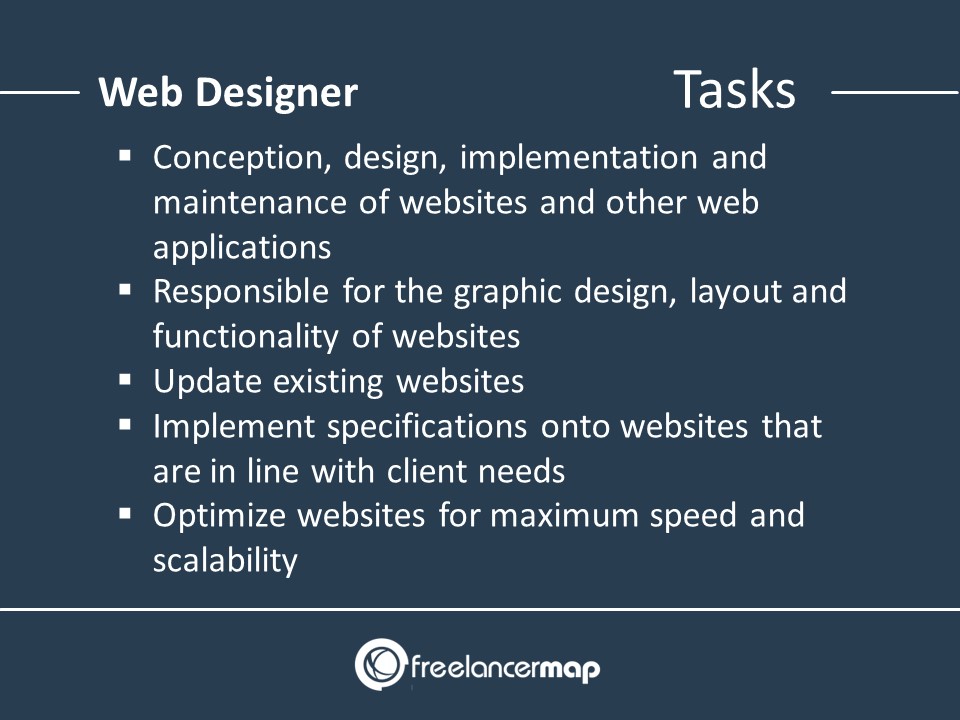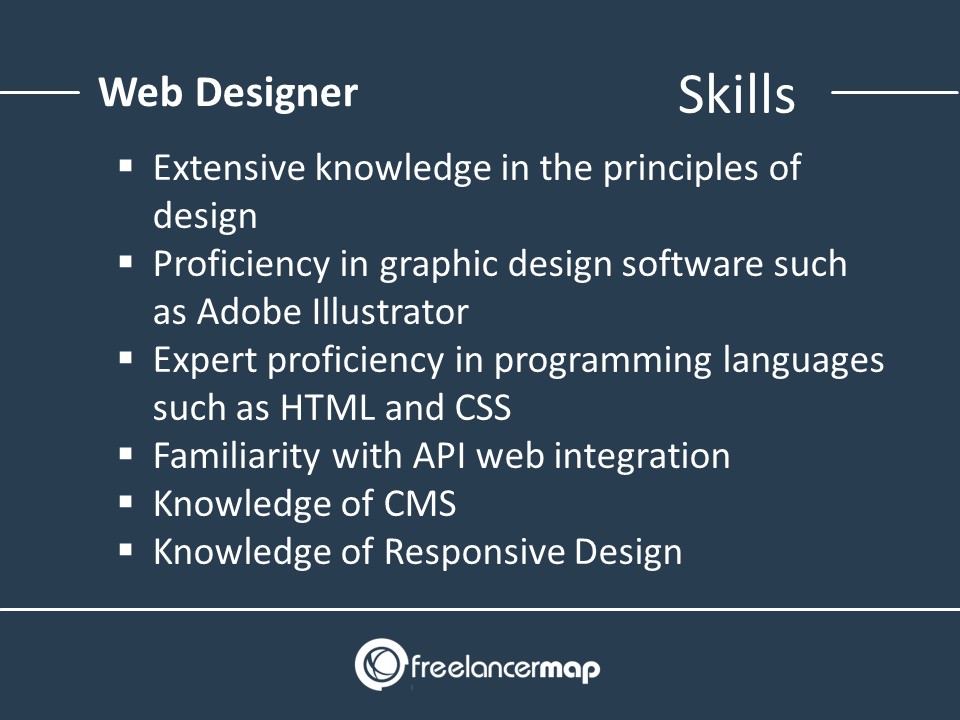A web designer is responsible for the creation and design of media content and is responsible for the technical quality of a website. They deal with the implementation of company homepages, newsletters, e-commerce platforms, online marketing campaigns, etc. What does a web designer do?
What is web design?
Web design comprises the conception, creation and design of websites. It is the process of planning and building the elements of a website, from the page structure, navigation and layout to the images, colors, fonts, and graphics.


Web design consists of various components that work together to create the finished website experience. This includes graphic design, user experience design, interface design, search engine optimization (SEO) and content creation. These elements ultimately determine how a website looks, feels, and functions on different devices.
Web design also refers to the technical implementation of a website in accordance with the communication goals and the specifications of a company.
Looking for a job in web design?
Find projects and jobs for web designers here
What are the responsibilities of a web designer?
The primary role of a web designer is the conception, design, implementation and maintenance of websites and other web applications. They are responsible for the website’s graphic and visual design, its layout as well as its functionality.
Web designers are also in charge of updating existing websites and implementing certain specifications onto the website as requested by the client. They optimize websites for maximum speed and scalability and maintain their appearance by enforcing content standards.


Web designers constantly test websites and make design improvements for them and are actively involved in conceptualizing creative ideas with clients. When necessary, they also integrate client CMS (Content Management System) programs into websites.
Throughout the website building process, web designers employ industry and design best practices and are required to prepare plans for designs and present the structure of the website to their clients/management.
What are the roles and responsibilities of a web designer?
- Conception, design, implementation and maintenance of websites and other web applications
- Responsible for the graphic design, layout and functionality of websites
- Update existing websites
- Implement specifications onto websites that are in line with client needs
- Optimize websites for maximum speed and scalability
- Maintain appearance of websites by enforcing content standards
- Regularly test websites
- Make design improvements for websites
- Conceptualize creative ideas with clients
- Integrate client CMS programs onto websites
- Employ industry and design best practices
- Prepare plans for website designs
- Present structure of websites to clients/management
Looking to hire a web designer?
Find freelance web designers here
What are the skills of a web designer?
Web designers have extensive knowledge in the principles of design and are proficient in graphic design software such as Adobe Illustrator, Affinity Designer etc. They also have expert proficiency in programming languages such as HTML, CSS and JQuery and are familiar with API web integration.
Web designers have knowledge of CMS and Responsive Design and have a good understanding of UX (User Experience), UI (User Interface) and Colour Theory.


They have a good understanding of SEO principles and web server management and are up-to-date with international web protocols and standards. Web designers also have basic knowledge in digital marketing and business management.
A good web designer is creative, imaginative and adaptable. They possess strong communication and analytical skills and have a keen eye for details. They also have excellent visual design, IT and time management skills.
What skills does a web designer have?
- Extensive knowledge in the principles of design
- Proficiency in graphic design software such as Adobe Illustrator
- Expert proficiency in programming languages such as HTML and CSS
- Familiarity with API web integration
- Knowledge of CMS
- Knowledge of Responsive Design
- Strong understanding of UX and UI
- Knowledge of Colour Theory
- Good understanding of SEO principles
- Knowledge of web server management software
- Up-to-date with international web protocols and standards
- Basic knowledge in digital marketing and business management
- Creativity
- Strong imagination
- Adaptability
- Strong communication skills
- Analytical skills
- Attention to detail
- Excellent visual design skills
- Strong IT skills
- Efficient time management skills
Join our IT freelance community now
What qualifications do you need to be a web designer?
You can choose to get a degree in Design Media or a related field but you don’t really need a Bachelor’s degree to work as a web designer. For most jobs, you will need to present a portfolio of your best work upon which your evaluation will be based on.
As long as you have a creative mindset, the ability to understand the basics of design and strong programming skills, you’re good to go. You can ofcourse always boost your chances of being hired by obtaining certifications from courses. Check out a few options for these below:
- Google UX Design Professional Certificate
- UX & Web Design Master Course: Strategy, Design, Development
- CSS Grids and Flexbox for Responsive Web Design
- Web Design for Beginners: Real World Coding in HTML & CSS
- Skillcrush Course – Front-End Development Course
Is web designer a good career?
The salary of a web designer depends on factors such as the industry they’re in, the role they have, and the location of the job.
For junior-level roles, the annual starting salary in the US is up to $50,900. The average salary with a few years of experience is closer to $66,000. At senior level roles with considerable professional experience, annual salaries can go up to $78,000.
How much do web designers make?
| Junior | $50,900 |
| Average | $66,000 |
| Senior | $78,000 |
Becoming a freelancer web designer
Freelancing is not a single field – there are tons of professions out there that you can do as a freelancer – photography, writing, developing all manners of software or hardware – and the list goes on and on. Web design is one of the areas where working independently makes the most sense.
It is a flexible career that allows you to work remotely and create websites for clients all around the world. With the right training and skills, you can become an in-demand freelance web designer and command higher rates for your services.
How much do freelance web designers make?
Freelance web designers on freelancermap charge on average:
Rates in the field of web design range between $33 and $106/hour for most freelancers.
The daily rate for web designers (8 working hours) would be around:
Tips for Web Design Freelancers
You can find general freelancing tips all over the web, including here in our blog. Marketing yourself on- and offline, setting and keeping deadlines, and maintaining a professional business relationship are all important things that any freelancer should master.
Here we’ll mention some field-specific tips for freelance web designers that hopefully will help you to achieve a successful freelancing career in web design.
1. Offer tutorials
First and foremost, don’t forget that your clients might not all be as tech-savvy as your circle of friends and colleagues. Sure, we all live in the 21st century and the internet is not something new, but people who are just starting to establish their online presence will struggle with things you find obvious.
WordPress is a good example – every web design enthusiast will tell you how easy and simple to use it is, but for some people, it just isn’t.
There are tons of options, plug-ins and features you have to choose from and it can quickly get overwhelming This is where you come in – don’t just give your clients a product – teach them how to use it properly. Work with them on Skype, Team Viewer or whatever you prefer and show them the ropes.
Create a video tutorial if you can. Clients that are not tech-savvy will immensely appreciate you doing this for them and saving them hours of searching the web for tips that they might not even understand.
2. Pitch up your further support
This second tip is, again, about going the extra mile. After finishing a contract, you can just take your check and forget it happened – but that’s not going to help you a lot towards the end goal of establishing a successful business.
Nurture your business relationship by offering your clients additional services. Things like data backup, general support, social media integration or just some starter content on their website can net you some extra profit and, more importantly, a long-lasting client.
You might enjoy: How to package your freelance services in 4 steps
3. Deliver in parts
While it is generally a good idea to split up your work – both for the sake of optimizing the working process and giving your client reassurance that progress is being done – in web design it is crucial to learn to deliver in parts.
Design is really something extremely personal and connected with a certain vision – you don’t want to work a month on something which you like a lot just to find out that the client had something entirely different in mind in the first place.
Set up sub-deadlines and always consider your clients’ opinions. Read also through our tips for delivering a design that your client loves.
4. Look into hosting affiliate programs
A hosting affiliate program can be a great and simple way for freelancers who work in web design to earn some additional money with little effort. If your clients don’t have a system set up to host their site, offer them the hosting platform of your choosing.
This will not only speed up the process on their side but give you an extra buck as well.
Just be upfront and tell your client what you actually get out of the offer to make sure they don’t feel cheated in the end.
Affiliate marketing can be a simple yet effective way to passive income as a web design freelancer.

Thanks for finally talking about “What does a
Web Designer do?”. Loved it!
Thank you for the story. I was empty minded on the difference between web designer and web developer. Keep on updating